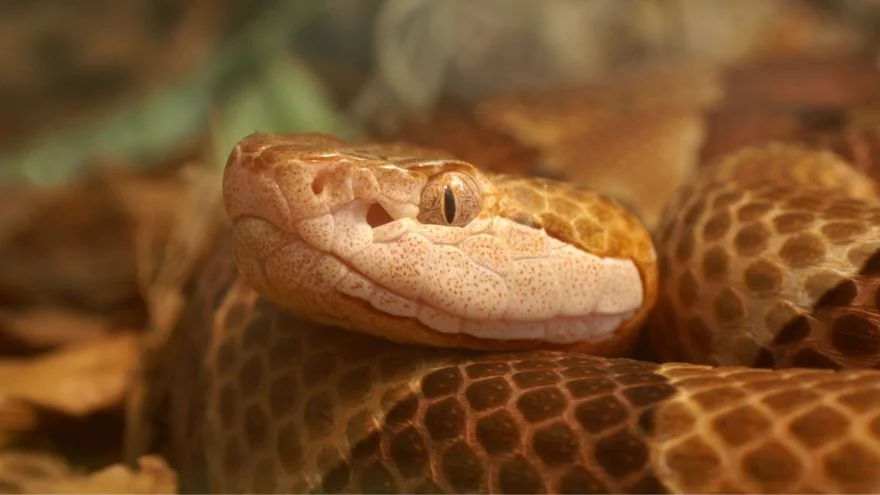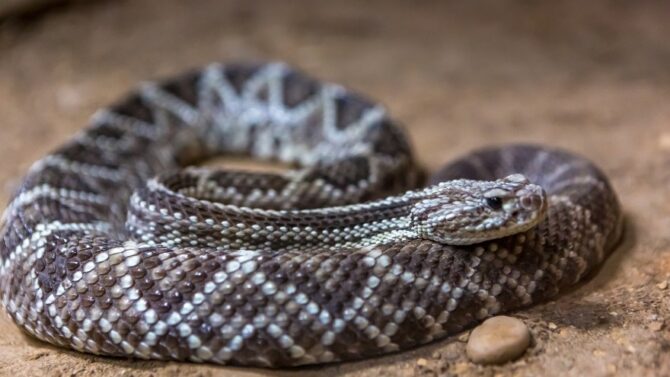Are you planning to explore the stunning natural landscapes of North Carolina?
While the state offers rich and diverse wildlife, it’s important to be aware of the potential dangers posed by some of the deadly creatures that call the state home.
From venomous reptiles and ferocious mammals to poisonous insects, the most dangerous animals in North Carolina can pose significant health risks.
In this article, we’ve compiled a list of the top 10 deadliest animals in the state, along with information on their behavior, habitat, and how to avoid them.
Whether you’re a local or a tourist, it’s important to be informed and prepared when venturing into the wilds.
What are the Most Dangerous Animals in North Carolina
1. American Alligators

- Scientific name: Alligator mississippiensis
- Habitat: Swamp, streams, rivers
- Threats: Powerful predators with a strong bite, known to attack humans when provoked or defending their territory.
The American alligator is one out of two alligator species, the other being the Chinese Alligator.
The American alligator is a species that can be found in Argentina, and it shouldn’t be confused with the American crocodile; the latter is a different animal.
Alligators often seem disinterested in humans, but make no mistake, this reptile can attack just as much as a crocodile would.
The alligator isn’t picky of prey so it can consider you as one. This animal demands extreme caution.
2. Tiger Sharks
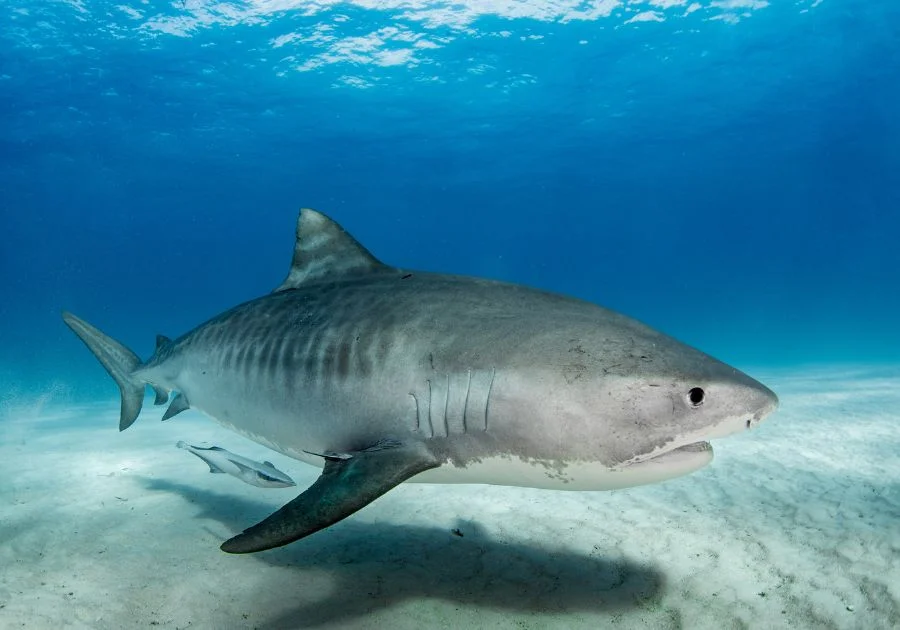
- Scientific name: Galeocerdo cuvier
- Habitat: Deep waters
- Threats: Canivoreous large predatory shark, known to attack humans in rare instances
There are many shark species in North Carolina, and the tiger shark is the scariest of them all.
It is huge, predatory, and has the characteristic shark jaws that have fueled the reputation of these fishes as maniacal beasts. This reputation is overrated but not completely false.
According to a study, the tiger shark can attack you at a whim, even if you don’t provoke it.
It has been responsible for more than 100 attacks, of which a couple was fatal.
The only shark species that attack people more than the tiger shark is the great white shark.
3. Eastern Diamondback Rattlesnake
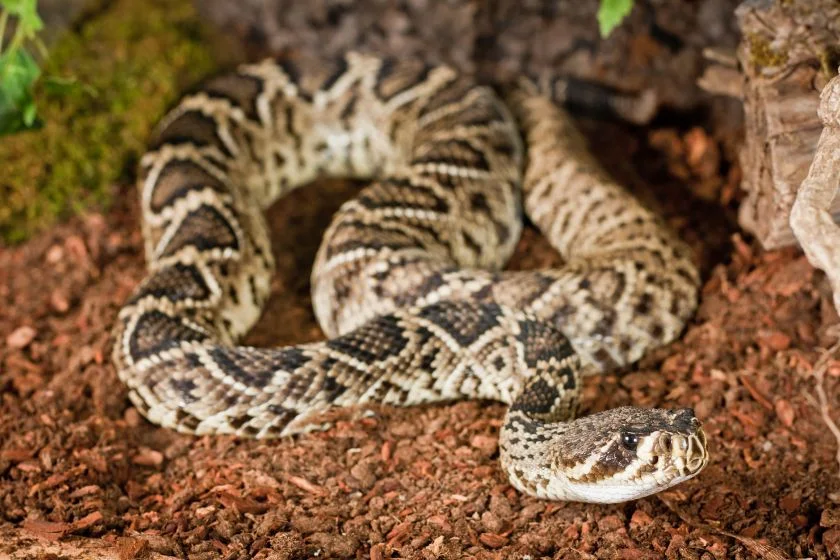
- Scientific name: Crotalus adamanteus
- Habitat: Dry pine forests, sandhills, coastal maritime hammocks, salt marshes
- Threats: Venomous, potentially fatal bites, aggressive when threatened
There are three rattlesnake species in the state: the timber rattlesnake, pigmy, and eastern diamondback.
All three have varying levels of danger, with the eastern diamondback being the most venomous snake in North Carolina. This is why we picked it for our list.
The eastern diamondback rattlesnake is highly venomous and is classified as the most venomous snake on the American continent. It is also the largest rattlesnake.
Though it is not aggressive, the eastern diamondback rattlesnake can inflict damage and even kill.
4. Eastern Copperhead
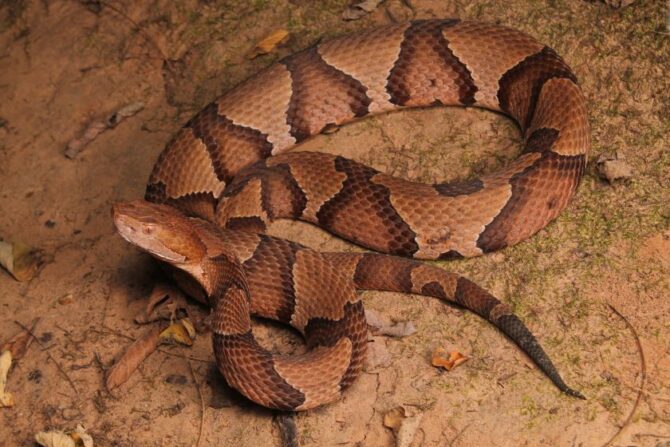
- Scientific name: Agkistrodon contortix
- Habitat: Deciduous forest, mixed woodlands
- Threats: Venomous snake, can cause serious injury or death with their bite
The eastern copperhead—simply called the copperhead—is a snake endemic to North America, particularly the East.
This snake looks pleasant, but its beauty is deceptive. In this case, it is even dangerous and deadly.
The eastern copperhead is a pit viper, and you guessed right, it has a high level of venom, just like other vipers.
The bites are not usually fatal, but it still requires a medical checkup as the venom has effects. These include extreme pain, throbbing, severe nausea, and swelling.
Fortunately, the eastern copperhead isn’t aggressive, but be careful not to provoke this dangerous reptile.
5. Cottonmouth

- Scientific name: Agkistrodon piscivorus
- Habitat: Creeks, marshes, streams, swamps
- Threats: Venomous snake with a painful bite, can be aggressive if threatened
The cottonmouth also goes by the names water mocassin, black mocassin, viper, and swamp mocassin.
It is often associated with the eastern copperhead and is considered far more dangerous.
The cottonmouth is found around swamps, streams, and marshes, places you should be wary of visiting as snakes are often there.
The cottonmouth’s venom is strong, though it doesn’t always kill. This venom has cytotoxic properties that can destroy tissues and even lead to amputation.
If you’re swimming and you detect a cottonmouth, get out of the water. It can bite even in an aquatic environment.
6. Black Bears
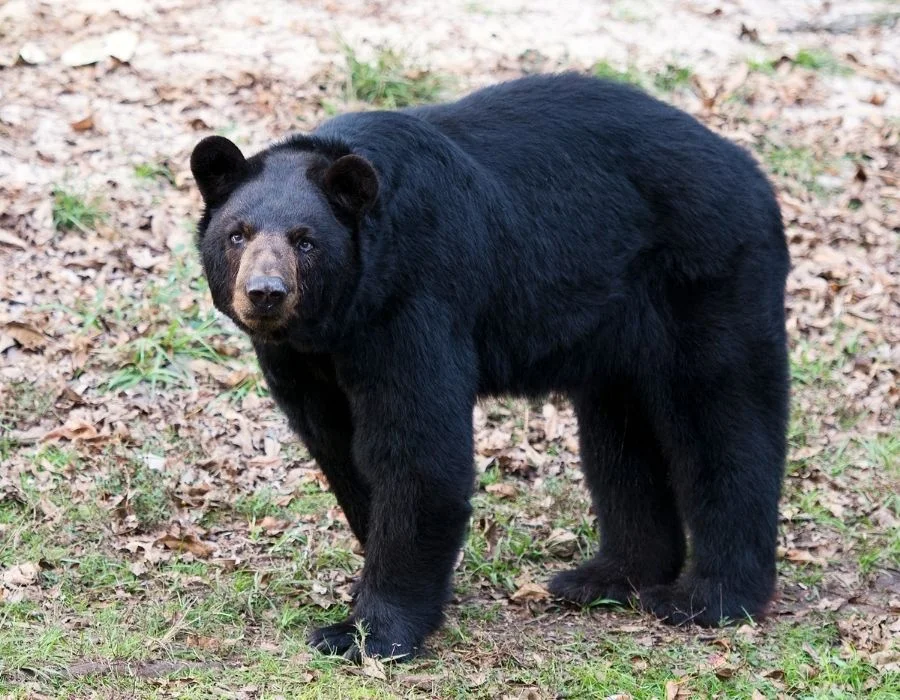
- Scientific name: Ursus americanus
- Habitat: Forests
- Threats: Strong, unpredictable, territorial
The black bear is the smallest of all bears that can be found in America (the grizzly and the polar bear are others).
It can be found only in North America, which is why its full name is the American bear.
Compared to other bear species, the black bear isn’t too dangerous. It hardly attacks and would prefer frightening its adversary off.
However, this doesn’t stop it from going after the said adversary if it feels threatened. Black bears can still inflict serious harm.
7. Southern Black Widow Spider

- Scientific name: Latrodectus mactans
- Habitat: Rock piles, rodent burrows, hollow tree stumps
- Threats: Venomous spider, bites can cause muscle pain, cramps, and spasms
The southern black widow is also called the black widow or the shoe button spider. It is one out of several black widow species, and they’re spread all over the world.
The southern black widow is found in the United States, in North Carolina, South Carolina, and other states like Texas.
Like all black widows, the southern black widow spider stays away from humans and isn’t aggressive.
However, it is venomous, and the venom can lead to lactrodectism, an illness caused by the bite of a black widow spider and other related species.
8. Brown Recluse Spider
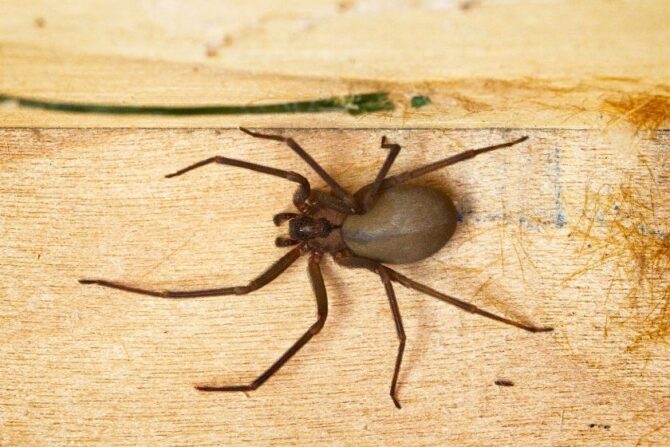
- Scientific name: Loxosceles reclusa
- Habitat: Woodpiles, sheds, garages
- Threats: Venomous and painful bites, can cause tissue damage and necrosis
The brown recluse spider shares some traits similar to the southern black widow. They both have a high level of venom, and they are wary of humans.
The brown recluse solitary nature earned it the name, and that’s the only fortunate part of this spider.
The bad news is that the brown recluse’s venom is strong enough to get you hospitalized. Symptoms include pain, body aches, fever, and a bite wound.
This spider only bites when threatened, so be careful about putting your hands into places where the spider might be.
9. White-tailed Deer
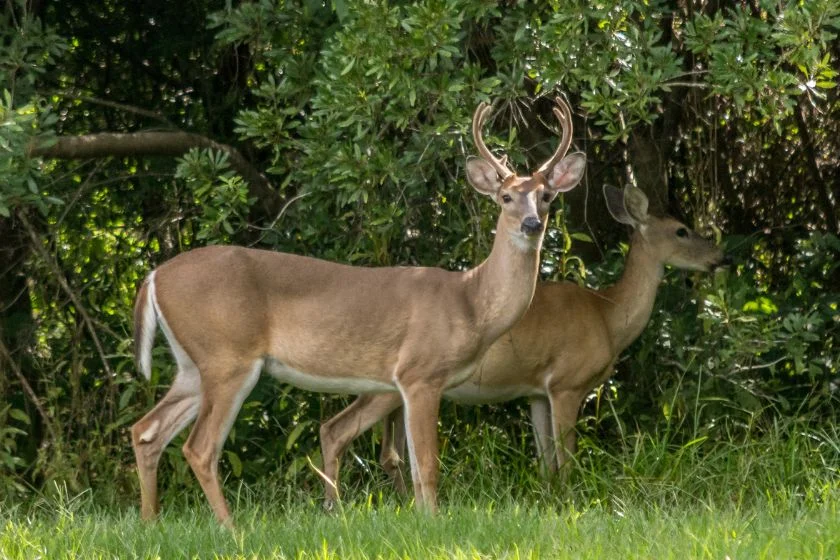
- Scientific name: Odoceilous virginianus
- Habitat: cropland, pastureland, brushland
- Threats: Can cause injuries to humans through collisions
You might be surprised to see a deer on the list. How is a peaceful herbivore dangerous?
The answer lies in auto-related accidents. According to statistics, deers are responsible for more than 10,000 car accidents in a year.
That’s enough to classify them as risky, even though they aren’t aggressive.
These accidents tend to happen in the early morning hours and early evening. While driving, do put on your seatbelt and respect speed limits.
10. Portuguese Man O’ War
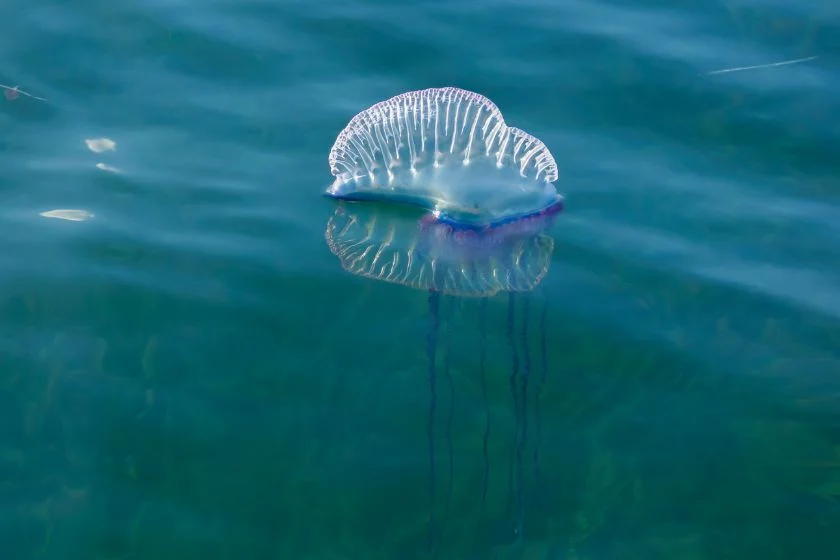
- Scientific name: Physalia physalis
- Habitat: Tropical and subtropical waters
- Threats: Painful and potentially life-threatening stings, which can cause intense burning, swelling, and difficulty breathing
Also called the man-of-war, the Portuguese man o’ war is often found in the Atlantic Ocean or the Pacific Ocean, and it is one of the most dangerous animals you’d ever encounter at sea.
The Portuguese man o’ war has tentacles that sting and are filled with venom. These tentacles are meant to capture prey but can be used as a weapon on humans.
The pain it causes is described as severe, though it isn’t long-lasting, depending on the individual.
In rare cases, the venom can be fatal. You need to be careful while swimming, and if you get stung, do not hesitate to get checked.
North Carolina Wildlife Safety Tips
Our wildlife safety tips not only keep you away from dangerous animals, but it also shows you that animals deserve to be respected too.
You shouldn’t walk into their “homes” and make them uncomfortable.
Having good comportment towards these animals is the most secure option for both you and them.
Here are some of our wildlife safety tips:
- Be cautious around swamps and rivers because of the snakes there. Wear appropriate footwear and an outfit that covers every part of your skin. This would prevent a snake from biting you if you mistakenly stepped into its zone.
- Do not startle animals, scare them off, touch them, or try to feed them. This would cause many issues that could have been avoided.
- Do not get too close to an animal, whether it is on our list of dangerous animals or not. You might end up getting hurt or hurting the animal in return.
- Avoid habitats where very dangerous animals like the alligator stay. Remember, these predators don’t need any reason to attack.
- Be cautious while swimming, either in freshwater or saltwater. The animals there are dangerous.
- Due to deer-related accidents, drive with caution, especially during evenings and mornings.
Conclusion
North Carolina’s wildlife offers breathtaking views and unique experiences, but it also comes with its share of dangers.
Understanding the potential risks posed by some of the most dangerous animals in North Carolina is crucial for staying safe while exploring.
Whether you’re hiking in the mountains, visiting the beach, or enjoying the forests, always be aware of your surroundings and follow safety guidelines.
